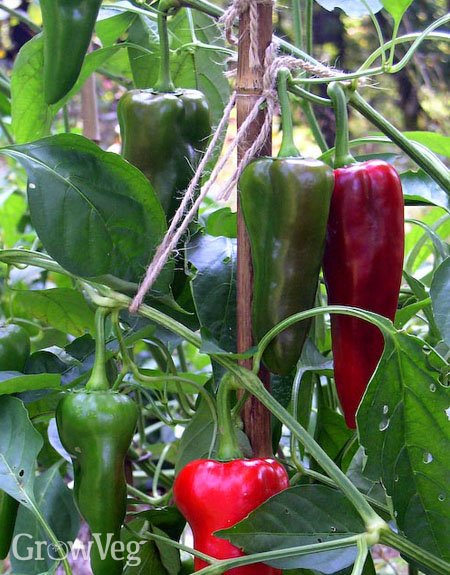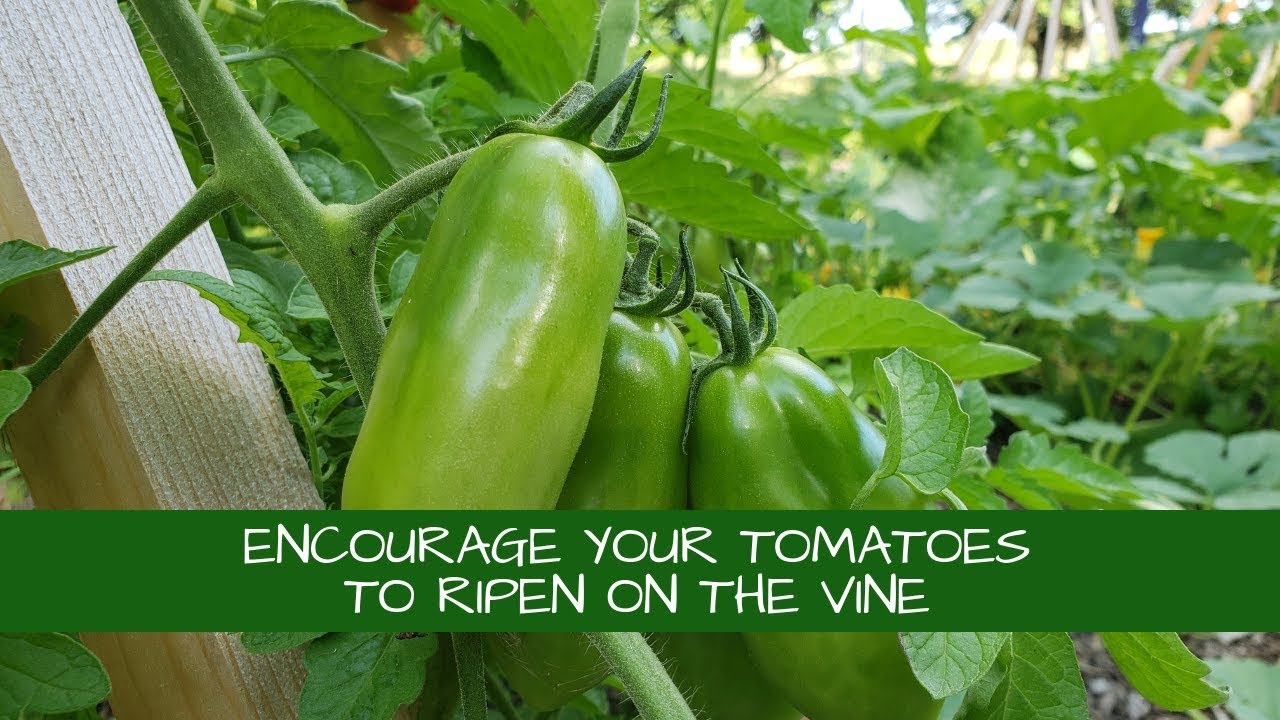As a gardener, watching your peppers fully ripen on the vine to reach their peak flavor and colors is one of the greatest joys. However, getting those peppers to properly ripen before the end of the growing season can be a challenge. Not to worry – there are several effective techniques you can use to encourage your peppers to ripen on the vine. In this article, we will explore the best practices to help you have a successful harvest.
Understanding What Affects Pepper Ripening
To know how to optimize ripening it helps to first understand what factors impact the process. Here are some of the main elements that can determine the ripening rate of peppers
-
Sunlight – Peppers need at least 6-8 hours of direct sunlight daily for optimal ripening. Insufficient light exposure can lead to slower ripening.
-
Nighttime temperatures – Peppers thrive when nighttime temps are above 55°F, Cooler nights can delay ripening
-
Soil moisture – Consistent soil moisture is important but overwatering can cause fruit rot and reduce yields.
-
Variety – The variety plays a role in ripening speed. Some ripen faster than others. Early season peppers tend to ripen quicker.
-
Plant health – Disease, pests, and nutrient deficiencies can stress plants and inhibit ripening.
By paying attention to these factors, you can create the best conditions for your peppers to ripen successfully on the vine.
Choosing the Right Pepper Varieties
Selecting pepper varieties that ripen well in your climate is a key first step. Some top options include:
-
Bell peppers – Ripen from green to red, yellow, orange, or purple. Sweet flavor.
-
Jalapenos – Turn from green to red when ripe. Hot flavor.
-
Poblano peppers – Ripen from dark green to reddish-brown. Mild heat.
-
Banana peppers – Ripen from green to yellow or red. Mildly sweet taste.
-
Cayenne peppers – Transition from green to red when fully ripe. Very hot.
Check seed packets or plant tags to find varieties suitable for your growing zone and season length. Earlier maturing peppers are ideal if you have a shorter season.
Providing Optimal Sun and Temperature
Once you’ve chosen your varieties, it’s time to provide the right growing conditions. Here’s how:
-
Sunlight: Plant peppers where they’ll get full sun – at least 6-8 hours of direct sunlight per day.
-
Temperature: Peppers thrive in warm conditions, ideally around 70-90°F during the day and above 60°F at night.
-
Avoid shading: Don’t plant peppers near taller plants or structures that can shade them.
-
Use row covers: In cooler climates, use fabric row covers to trap heat around the plants.
-
Add mulch: Mulching the soil helps regulate soil temperature. Use 2-3 inches of organic mulch.
Giving your peppers the sunlight and warmth they crave will encourage ripening on the vine.
Watering for Optimal Ripening
Proper watering is also essential for ripening success. Here are some tips:
-
Water deeply 1-2 times per week, allowing the soil to slightly dry out between waterings.
-
Use drip irrigation or soaker hoses to target the roots. Avoid overhead watering.
-
Mulch around plants to maintain soil moisture and reduce evaporation.
-
Check soil – it should be moist but not saturated. Overwatering causes problems.
-
In dry climates, shade plants during the hottest parts of the day to reduce water needs.
-
Peppers often need extra water when ripening to support fruit development.
With the right moisture levels, your peppers will thrive and ripen beautifully on the vine.
Providing Adequate Nutrients
Peppers are heavy feeders, so providing proper nutrition is key for ripening.
-
Use a balanced fertilizer higher in phosphorus and potassium, which promote flowering and fruiting.
-
Apply fertilizer according to package directions to prevent over-fertilizing.
-
Check soil pH – peppers prefer a range of 6.0-6.8. Adjust if needed.
-
Work in several inches of compost or other organic matter before planting. This provides nutrients over time.
-
Side dress with additional fertilizer partway through the season if plants need a nutrient boost.
-
Fish emulsion, compost tea, and kelp extracts also make good organic fertilizer options.
With the right nutrients available, your plants will direct energy towards ripening rather than vegetative growth.
Employing Effective Growing Techniques
Certain growing methods can further encourage optimal pepper ripening:
-
Prune judiciously: Remove excessive foliage and branches to improve air circulation and light exposure to fruits. But don’t over-prune.
-
Provide support: Use cages, stakes, or trellises to support healthy, upright plant growth.
-
Use black plastic mulch: The black color absorbs and traps heat around the plants, promoting ripening.
-
Monitor for pests/disease: Scout regularly and take control measures to keep plants healthy and able to ripen well.
-
Use natural ripening sprays: Applying natural compounds like ethylene, calcium chloride, or plant hormones can enhance ripening.
-
Harvest on time: Pick peppers at peak maturity for fullest flavor. Leaving fruits on too long decreases quality.
With the right techniques, you can guide your peppers towards on-vine ripening success.
Dealing with Common Ripening Setbacks
Even if you do everything right, sometimes issues pop up. Here are some troubleshooting tips:
-
Cool weather: Use row covers, black plastic mulch, cloches, or greenhouses to provide extra warmth if dealing with cool temperatures and short seasons. Choose faster maturing varieties.
-
Shading: If existing plants or structures are shading your peppers, strategically prune the surrounding vegetation or use reflective mulch to bounce more sunlight onto the peppers.
-
Pests/disease: Monitor closely and take action at the first signs of infestation or infection. Remove damaged plant parts promptly. Use organic remedies to get issues under control before ripening is impacted.
-
Slow/uneven ripening: This can be due to insufficient light, overwatering, or over-fertilization with nitrogen. Address the underlying causes and use natural ripening sprays if needed.
Stay vigilant against problems, and act quickly to get your peppers back on track for ripening.
Knowing When Peppers Are Ready for Harvest
Timing your harvest properly ensures peppers reach optimal ripeness on the vine. Look for these signs:
-
Fruits have reached mature size for the variety
-
Peppers have turned their ripening color (red, yellow, orange, etc)
-
Smooth, glossy skin with no blemishes or soft spots
-
Firm, crisp flesh when gently squeezed (not mushy)
-
Fruits are attached securely to the stem – no signs of shriveling
Always harvest in the morning when peppers are fully hydrated. Use scissors or pruners for a clean break from the stem. Avoid yanking or pulling fruits off forcibly.
Storing Your Harvested Peppers
To enjoy your homegrown peppers as long as possible after harvest:
-
Store freshly picked peppers unwashed in the refrigerator in breathable bags – they keep for up to a week.
-
Leave the stems on for longest shelf life. Wash just before eating.
-
For extended storage, consider canning, pickling, freezing, or drying excess ripe peppers.
-
Freeze diced peppers in airtight containers or freezer bags for later use in cooking.
Proper post-harvest storage keeps ripe peppers fresh and delicious until you’re ready to enjoy them.
Achieving Pepper Ripening Success
Growing peppers that fully ripen on the vine before frost takes some effort, but the rewards are well worth it. Now that you know how to optimize conditions for ripening, you can look forward to harvesting an abundance of sweet, flavorful peppers. Pay close attention to sunlight, temperature, water and nutrients. Combine that with suitable varieties, preventative care and smart growing techniques for a successful crop that ripens on time. With a little luck from the weather, your hard work will pay off in vibrant, ripe peppers straight from the vine.
Plants Related to this Article
If you need help designing your vegetable garden, try our Vegetable Garden Planner.
Give Blossoms a Buzz
Starry pepper blossoms are self-fertile, meaning they will set fruit without being visited by pollinating insects. But fruit set doubles when the blossoms are buzzed by bees – a form of pollination that’s basically a violent shaking of the flowers. You can simulate buzz-pollination (called sonication) by giving blossom-bearing branches a sound shake. Don’t worry if you see ants or other small insects crawling around on pepper blossoms, because they aid in the pollination process, too. And, though you might expect insects to avoid hot peppers, a team of Brazilian researchers directed by worldwide bee expert Tony Raw discovered that females of certain tiny native bees were super-efficient pollinators of hot pepper blossoms.

Peppers that are not fully grown are mostly green, except for Bianca and Purple Beauty, which are pale yellow or lavender when they are young. As the seeds inside the peppers mature, the flesh color changes to red, orange, or yellow. Peppers are ready to eat when they are “mature green,” which means the seeds inside are ready, but the peppers haven’t changed colors yet. When peppers change colors and are fully ripe, they are much healthier and tastier. But there is a catch: the longer you leave peppers on the plants to ripen, the less interest the plants show in making more buds and flowers.
To solve this problem, I pick the first peppers of the season when I see the first faint stripes of ripe color. This is known as the “breaker stage.” I leave the shiny peppers out in my warm kitchen instead of putting them in the fridge. The color will stay on most of them for a few days, giving me more time to enjoy their long-awaited tastes. And in the garden, plants that don’t have to worry about ripening fruits can get to work growing more of them. When the cold weather in the fall ends pepper season, I’ll have a lot of fully ripe peppers to eat. I can also freeze and dry them.
How To Ripen Already Picked Peppers – Garden Quickie Episode 17
FAQ
Why are my peppers still green?
How do you ripen peppers off the vine?
Using sunlight is the best way to ripen peppers off the vine. The best way to ripen peppers is to expose them to sunlight. Place your peppers in a warm and sunny spot to speed up the ripening process. The warmer the temperature of their environment, the faster the ripening process; you will get the best results at 70 degrees Fahrenheit or above.
How do you keep peppers green and not ripening?
So, the opposite is true here: If you want to keep your peppers green and not ripening, stick them in the fridge. Using sunlight is the best way to ripen peppers off the vine. The best way to ripen peppers is to expose them to sunlight. Place your peppers in a warm and sunny spot to speed up the ripening process.
How do you ripen peppers if they are not ripe?
The Windowsill Method. This is easiest if you only have a few unripe peppers. Simply leave your peppers on a sunny windowsill in a warm room for a few days. They will begin to turn color and ripen in the sun and warmth. Once ripened to your liking, store them in the refrigerator or use them right away. If they start to go soft, throw them out.
What temperature should peppers ripen?
Place your peppers in a warm and sunny spot to speed up the ripening process. The warmer the temperature of their environment, the faster the ripening process; you will get the best results at 70 degrees Fahrenheit or above. Examples of ideal places for ripening peppers include a sunny windowsill or on a patio table.
- A Complete Guide to Caring for Yuki Cherry Blossom Shrub - January 23, 2025
- Identifying Red Hot Poker Seeds: What to Look For When Harvesting Torch Lily Pods - January 23, 2025
- A Complete Guide to Harvesting Evening Primrose Seeds - January 23, 2025

